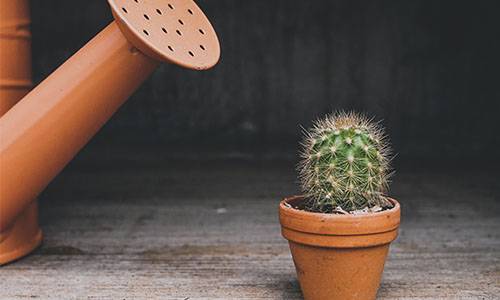

A spray can (also known as a sprinkler) is an easy way to water plants by hand, usually with a nozzle and handle. Most spray cans hold 1-2.5 gallons of water and are made of plastic, ceramic, or metal. So how do choose a watering can?
Spray pots have been used since the 17th century (or earlier) and numerous design improvements have been made since then. At that time, metal spray pots (or galvanized spray pots) were the most common style. Today, these are often used for decoration or as a throwback to the old days.
A quality spray can have a cap on the end with small holes designed to break the water flow into small drops. This prevents the water pressure from getting too high, thus spreading the water evenly over the plants.
Many gardeners prefer to use plastic spray cans rather than watering cans for reasons we will cover later in this article.
It’s true that anything that holds water and can be carried around can act as a spray bottle. However, if you use a spray can regularly, it is best to buy a well-designed one.
I do a lot of gardening with containers in a city with very hot summers, so I use my spray cans a lot.
Yes, that’s a plural spray can. I like to keep one in each of my four rain barrels, so they’re always nearby when I notice the seeder is drying out. I also keep one or two under the A/C condensate drain to collect water.
Two of my spray cans expired this spring. One was cheap plastic, very similar to the one in the title picture of this post, which eventually fell apart due to age.
It lasted much longer than I expected (I think I bought it in my apartment balcony garden twenty years ago). The other is a metal spray can – the weld that holds the handle to the body is loosened.
TYPES OF SPRAY CANS
PLASTIC SPRAY CANS
Plastic spray cans are inexpensive and colorful, and many are shaped or molded to resemble elephants or other animals.
Animal-shaped spray cans make gardening fun for children and add a cheerful atmosphere to any room.
Plastic spray cans are suitable for interior decorating and will not scratch tables or woodwork.
Although we often think of plastic spray cans as fragile and suitable only for indoor use, many are made of durable but lightweight materials that will last if used and stored correctly.
GALVANIZED STEEL SPRAY CANS
Galvanized steel spray cans have a classic “old world” look and can provide a decorative appearance to any room or garage shelf. These spray cans are strong and durable and will not rust, even in the rain.
However, galvanized steel will rust if it comes in contact with alkaline soil. When you need to irrigate many plants, choose galvanized steel spray pots to cover large flower beds and herb gardens.
Spray pots made of brass or copper
Brass or copper spray can come in a variety of sizes. Smaller cans may be painted or shaped like animals, and they have the same decorative appeal as smaller plastic waterers.
METAL SPRAY CANS
You can use small spray cans made of metal for indoor watering or for small outdoor gardens. Use larger cans outdoors in the garden.
Metal spray cans are better at dispensing soluble fertilizer and last longer than plastic cans.
Unlike plastic spray pots, unpainted metal cans can be stored safely outdoors and are resistant to high winds and inclement weather.
TIPS FOR CARING FOR AND STORING SPRAY CANS
Drain spray cans when not in use. In winter, bring the metal can indoors or at least drain all water from it. If the water in the metal will freeze, it may damage the bottom of the container.
Plastic cans should be stored in a garage or indoors, away from the sun’s UV rays. Clean the inside of the plastic squirt bottle with a gentle bottle brush, baking soda, and warm water.
If your squirt bottle is full but nothing comes out of the rose perforated hole at the end of the spout, remove it from the spout and clean it with a cloth and warm water.

